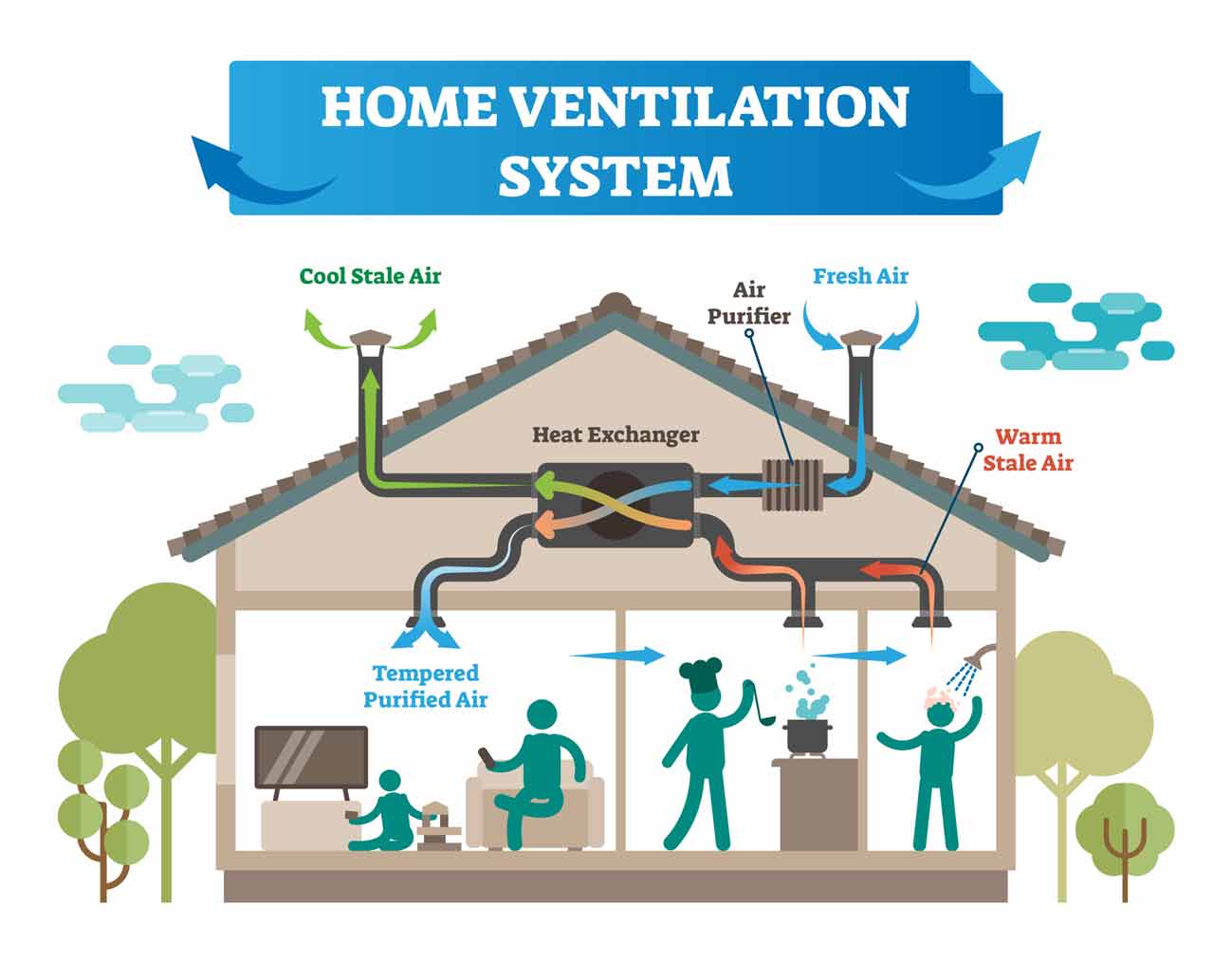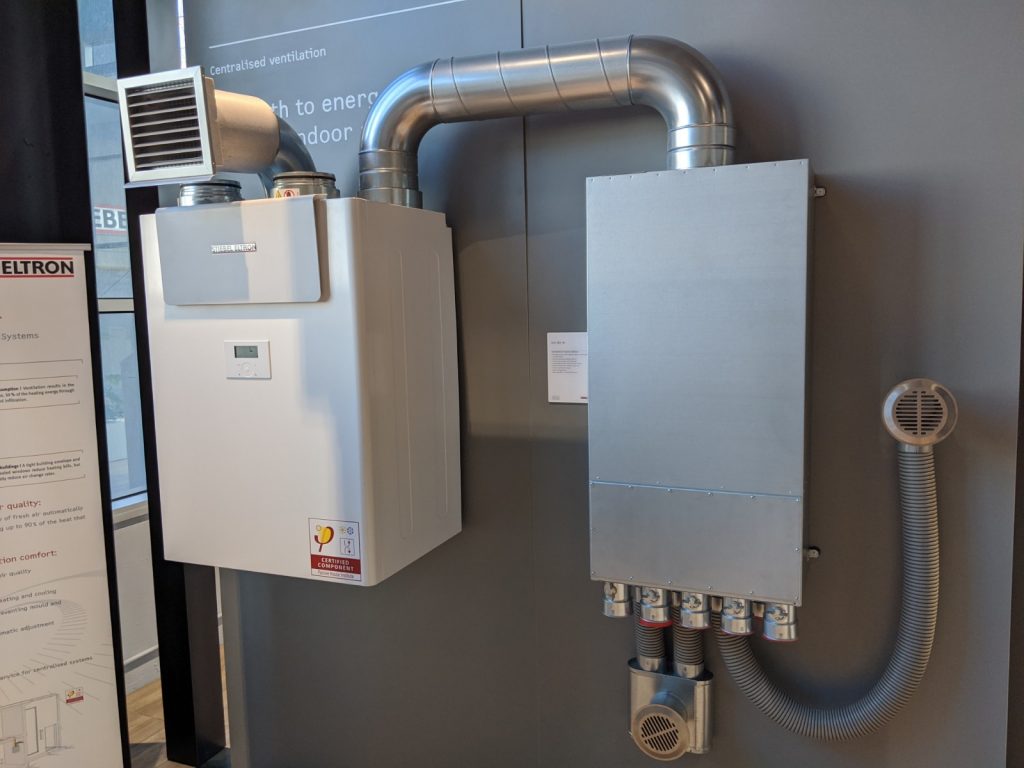How HRV Ensures a Comfortable Indoor Living Environment
The All-Inclusive Guide to the Uses of Heat Recovery Ventilation in Modern Structures
Heat Recovery Ventilation (HRV) systems represent a considerable advancement in constructing technology (HRV Heat Recovery Ventilation). They give a technique for trading stale interior air with fresh outdoor air while decreasing energy loss. This strategy not only boosts indoor air high quality but likewise adds to energy performance in both domestic and industrial buildings. Understanding the numerous applications and advantages of HRV can expose its important role in modern-day design and sustainability efforts. The implications of this technology deserve discovering even more
Comprehending Heat Recovery Ventilation Equipments

Although lots of modern buildings prioritize energy performance, understanding heat healing air flow (HRV) systems is essential for optimizing indoor air high quality and minimizing power consumption. HRV systems function by transferring heat from stale indoor air to incoming fresh air, successfully keeping comfortable interior temperature levels while decreasing power loss. These systems contain a warm exchanger, followers, and ductwork that assist in the blood circulation of air. Throughout winter months, HRV devices record and recycle warm from the outward bound air, while in summer season, they can assist cool incoming air. By continuously trading air, HRV systems additionally lower moisture and the concentration of indoor contaminants. Proper installation and upkeep of HRV systems are essential for their performance and performance in improving general building efficiency and convenience.
Benefits of Heat Recovery Ventilation
Heat recovery ventilation systems provide numerous advantages that improve both energy performance and interior air high quality in contemporary buildings. By capturing and reusing power from exhaust air, these systems substantially reduce heating & cooling costs, causing lower power usage. Additionally, they maintain a stable flow of fresh outdoor air, lessening the danger of interior air pollutants and irritants. This constant exchange assists regulate moisture degrees, stopping mold and mildew growth and making certain a healthier living setting. Furthermore, HRV systems add to sustainability goals by reducing overall carbon footprints. Their capacity to maximize ventilation without giving up thermal comfort makes them a beneficial addition to contemporary building layout, advertising both financial and environmental advantages.
Applications of HRV in Residential Buildings
As home owners increasingly prioritize power performance and indoor air high quality, the applications of warmth recovery ventilation (HRV) systems in property structures have become a lot more common. HRV systems are particularly useful in securely secured homes, where keeping fresh air flow is essential for protecting against wetness buildup and indoor toxins. They efficiently move warmth from outgoing stale air to incoming fresh air, minimizing energy prices related to heating & cooling. In addition, HRVs can boost convenience degrees by controling moisture and temperature level. They are also adaptable for various property designs, including single-family homes and multi-unit buildings. Generally, incorporating HRV systems sustains lasting living techniques while ensuring a healthier interior setting for passengers.
HRV in Industrial and Industrial Setups
In business and commercial settings, the application of warmth recuperation air flow (HRV) systems has become increasingly essential for optimizing energy effectiveness and keeping air top quality. These systems properly move warm from exhaust air to incoming fresh air, decreasing the need for added home heating or cooling. This not just reduces energy prices however also adds to sustainability campaigns. Industries such as manufacturing, warehousing, and office structures benefit greatly from HRV systems, as they help manage temperature level and humidity levels, ensuring a comfy and effective environment. HRV systems help in removing pollutants and excess moisture, boosting indoor air top quality. As guidelines around air quality end up being top article stricter, the adoption of HRV technology is likely to expand, making it an essential component of modern-day business and industrial framework.
Future Patterns in Heat Recovery Ventilation Modern Technology

Frequently Asked Questions
Just How Does Heat Recovery Ventilation Impact Indoor Air High Quality?
Heat recovery ventilation significantly improves indoor air quality by continuously exchanging stale indoor air with fresh outdoor air while recuperating energy. This process reduces toxins, preserves suitable humidity levels, and assures a healthier setting for residents.
Can HRV Solutions Be Set Up in Existing Buildings?
HRV systems can certainly be installed in existing buildings. Retrofitting might need modifications to ductwork and air flow formats, however it considerably boosts energy efficiency and interior air quality, making it a viable alternative for older structures.
What Maintenance Is Required for HRV Equipments?

Are There Details Climates Where HRV Is A Lot More Efficient?
Heat recovery ventilation systems are particularly reliable in climates with significant temperature level distinctions in between seasons. These systems maximize energy efficiency by Homepage recuperating heat from exhaust air, making them excellent for both chilly and moderately cozy environments.
Exactly How Do HRV Equipments Affect Energy Costs?
